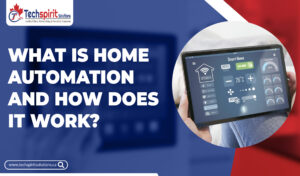Welcome to the forefront of contemporary business, where the Point of Sale (POS) system serves as the nexus of seamless transactions and optimized customer interactions.
As entrepreneurs, we know that running a successful business isn’t just about what you sell; it’s about how you sell it. And that’s where understanding the intricate realms of POS system cost comes into play.
Whether you own a bustling café, an upscale boutique, or a cutting-edge online store, envision a system that not only manages payments but also transforms each customer encounter into a memorable experience. This transformative power is the hallmark of a well-designed Point of Sale system.
In our exploration, we will unravel the POS system cost, exploring the factors that influence every dollar spent and the impact these choices have on your business’s efficiency, growth, and, most importantly, customer satisfaction.
Table of Contents
ToggleWhat is a POS System ?
The Point of Sale system, often abbreviated as POS, stands as a transformative powerhouse revolutionizing business transactions with unparalleled efficiency and sophistication. Bid farewell to the cumbersome cash registers of the past; today’s POS systems emerge as dynamic partners in your journey to success.
Empowering your business, these systems facilitate seamless payment methods, including credit cards, debit cards, and cash, all effortlessly processed. Yet, their capabilities extend far beyond payment processing. POS systems serve as invaluable tools, enabling precise inventory management, accurate sales tracking, and efficient staff supervision.
Moreover, these systems act as catalysts for elevating your marketing strategies by collecting invaluable customer information, propelling your marketing endeavours to unprecedented heights.
Now, let’s talk about the reason you clicked on this article in the first place — the cost of a point-of-sale system.
POS System Cost: Everything You Need to Know
The cost of a POS (Point of Sale) system can vary significantly based on the provider and the features essential for your business operations.
Free options like Square and PayPal Zettle offer basic sales and business management tools without any startup or monthly fees, although you’ll need to invest in hardware and pay ongoing payment processing fees.
On the other hand, paid POS systems such as Lightspeed, Toast, Clover, and Square Plus Plans offer more advanced features like inventory tracking, restaurant operations, marketing, and loyalty programs.
These systems typically come with monthly fees ranging from $50 to over $200, in addition to hardware expenses and ongoing payment processing fees.
Hardware POS system costs can vary widely, ranging from simple card readers at no cost to complete retail registers that can exceed $1200. The final expense is influenced by the complexity and requirements of the POS hardware your business needs.
The point of sale cost can vary significantly based on several factors, including the type of business, software features, hardware requirements, and payment processing fees. Let’s delve into each aspect in detail:
1. Type of Business and Software Features
- Basic POS Software : Some POS systems offer free basic software that includes essential features like sales processing and inventory tracking.
- Advanced Features : For businesses requiring advanced capabilities such as detailed sales reporting, employee management, and customer relationship management (CRM), premium software plans are available, often starting at around $29 to $300 per month.
2. Hardware Costs
- Terminals : The cost of POS terminals varies widely, ranging from $200 for basic models to $6,500 or more for high-end, specialized systems.
- Additional Hardware : Other necessary hardware components include cash drawers ($150), card readers ($50), barcode scanners ($200 to $350), receipt printers ($300 to $400), and customer-facing displays ($150 to $800+).
Popular POS Providers and Their Hardware as well as Software Costs
- Toast(Restaurant POS): Hardware costs range from $0 to $799, with software plans starting from $0 to $69 per month.
- Shopify(Retail POS): Hardware costs range from $29 to $399, with software plans starting from $29 to $299 per month.
- Square(Retail POS): Hardware costs range from $0 to $799, with software plans starting from $0 and optional paid features.
- Clover(Retail POS): Hardware costs range from $60 to $175 per month (lease), with software costs included in hardware pricing.
- Lightspeed(Retail POS): Hardware costs range from $89 to $269 per month (lease), with software costs included in hardware pricing.
3. Installation Fees
- Cloud-Based Systems: Many modern POS systems are cloud-based, requiring little to no installation. Thus, businesses can save on POS System installation costs, especially if they opt for user-friendly, plug-and-play solutions.
- Shopify(Retail POS): Hardware costs range from $29 to $399, with software plans starting from $29 to $299 per month.
- Complex Setups : Businesses with specific hardware requirements or intricate setups may incur installation fees, ranging from $0 for cloud-based systems to up to $700 for specialized installations.
4. Payment Processing Fees
- Transaction Fees : POS systems charge a fee per transaction, which usually includes a percentage of the sale amount (ranging from 1.5% to 3.5%) along with a small fixed fee per transaction.
- Card-Present vs. Card-Not-Present Transactions : Fees vary based on the type of transaction. Card-present transactions (when the physical card is used) often have lower fees than card-not-present transactions (manual entry or online sales).
Here are the payment processing costs for various POS systems:
- Toast : Charges 2.49% – 2.99% plus $0.15 per transaction, depending on the selected plan.
- Shopify : Payment processing fees range from 2.4% – 2.9%, along with an additional $0.00 – $0.30 based on the plan and transaction type.
- Square : Payment processing fees range from 2.4% – 2.9%, along with an additional $0.00 – $0.30 based on the plan and transaction type.
- Clover : Payment processing fees range from 2.4% – 2.9%, along with an additional $0.00 – $0.30 based on the plan and transaction type.
- Lightspeed : Charges a payment processing fee of 2.6% plus $0.10 – $0.30 per transaction, varying based on the transaction type.
5. Add-Ons and Integrations
Additional Features: Businesses may opt for add-ons like advanced sales analytics, loyalty programs, or integration with third-party applications, incurring additional monthly costs based on the chosen features.
In simple words, the cost of a POS system is a multifaceted consideration involving software subscriptions, hardware investments, installation fees (if applicable), payment processing charges, and optional add-on features.
Careful evaluation of these factors ensures businesses choose a tailored POS solution within their budget, effectively enhancing operations and customer experiences.
Factors Influencing POS System Cost
Understanding the various factors that can impact the cost of point of sale system is crucial for businesses aiming to make an informed decision. Let’s delve into these aspects:
User Base : The flexibility of user accounts can influence your POS system cost. Some software options limit the number of users allowed, so choosing a plan tailored to your user requirements is vital.
Transaction Fees : These fees, comprising a percentage of the purchase plus a few cents, vary across payment providers. Considering the volume of transactions your business handles is essential to evaluate the impact on your overall expenses.
Different Locations : If your business spans multiple stores or counters, the inventory management complexity increases. Additional hardware and software might be necessary to cater to diverse needs.
E-commerce Integration : In today’s digital age, integrating your brick-and-mortar store with an e-commerce platform is often essential.
This integration streamlines sales, inventory, and customer data, providing a seamless customer experience. However, this convenience may come at an additional cost, impacting your overall POS system expenditure.
Industry Type: Different industries have unique requirements. For instance, a POS system tailored for a bar differs significantly from one designed for a catering company. The demands of retail, dining, food trucks, and cafes vary, impacting the hardware and software functionalities required. Understanding these industry-specific needs ensures you invest in features essential to your business.
Additional Integrations: A robust POS system seamlessly integrates with inventory management, barcode scanning, and custom report generation. These integrations enhance efficiency but often come at an added cost. Your monthly fee may escalate based on the complexity and number of features you require for streamlined business operations.
By carefully assessing these features and aligning them with your business requirements, you can make a strategic decision that not only meets your operational needs but also optimizes your budget effectively.
Conclusion
In our exploration of POS System Cost, you’ve gained valuable insights to make well-informed decisions, guaranteeing the seamless and efficient operation of your business.
Remember, the cost of a point of sale system isn’t just an expenditure; it’s an investment towards the future of your business. Each dollar spent translates into enhanced customer experiences, streamlined operations, and the potential for exponential growth.
So, whether you’re running a cozy cafe, a bustling retail store, or a dynamic e-commerce platform, choosing the right POS system tailored to your needs is pivotal.








